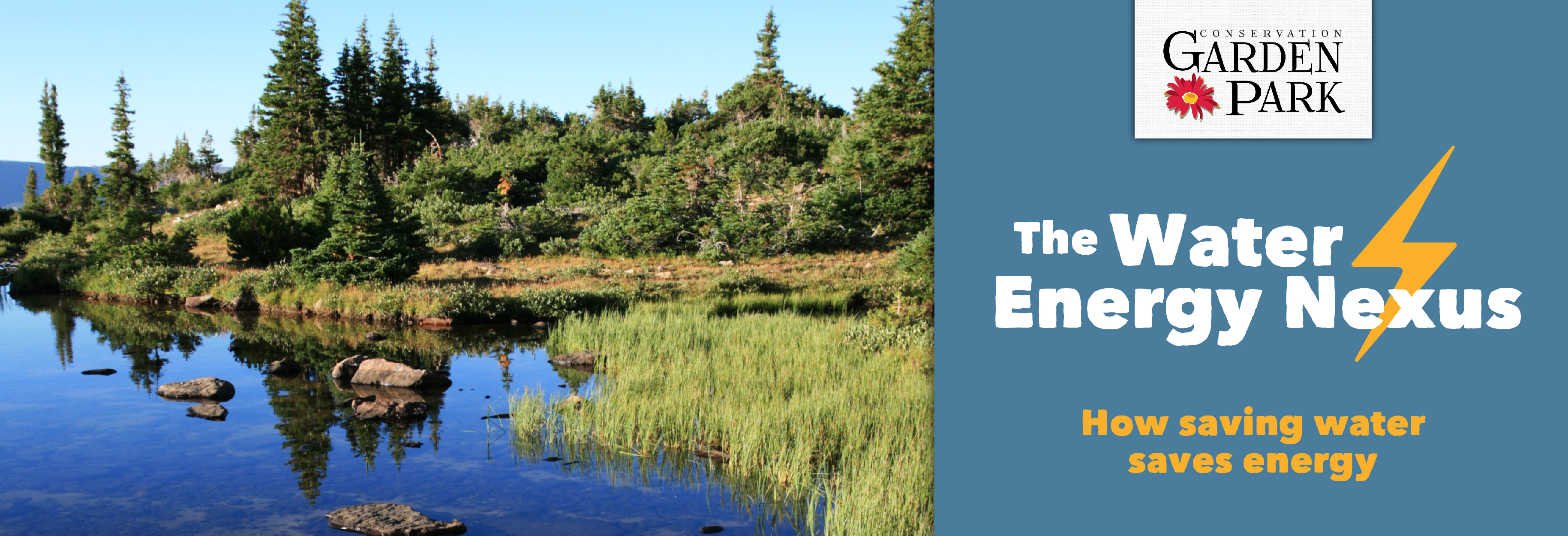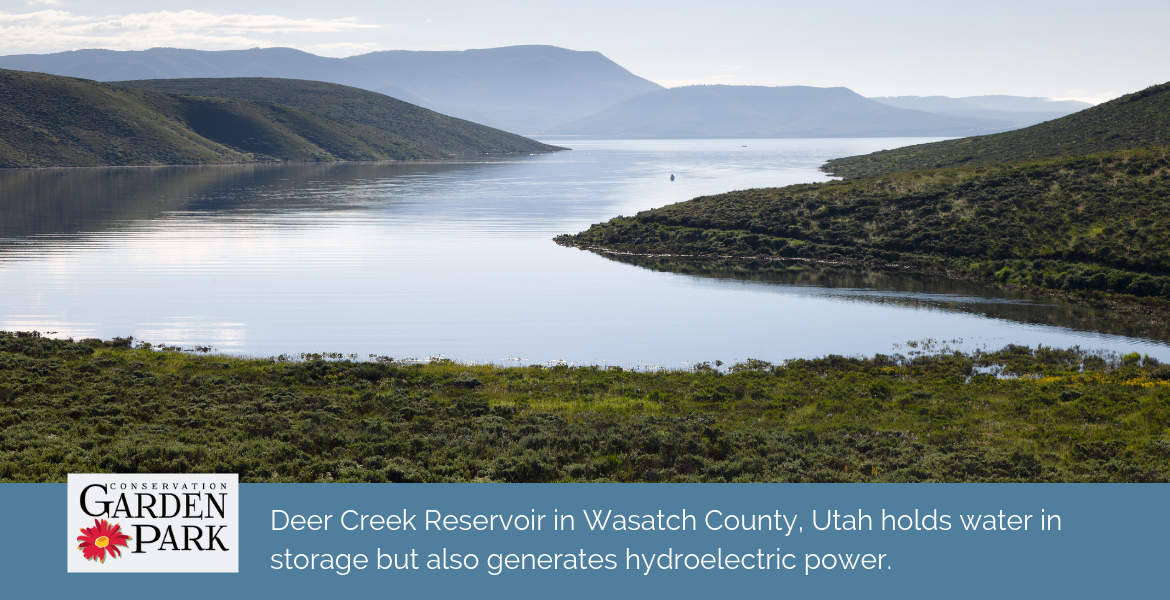
The Water Energy Nexus
-

An article on water rates written by a garden may seem odd. But because Conservation Garden Park is the child of Jordan Valley Water Conservancy District, we thought it would be helpful to explain some things about how water works in Utah: The cost of water, how you pay for it, and what we can do to be better water stewards. If we want to sustain our quality of life, we must use water differently.
-
How does the cost of our water compare?
If you’re on a fixed income or watch your monthly water bill balloon into the hundreds every summer, you may be surprised to learn that compared to many states, water in Utah is cheap. Utah water providers can only charge what it costs to develop, treat, and deliver the service—including things like quality assurance, maintenance, and personnel.
And even though there are many components to delivering quality drinking water, the water itself is free. You could go down to the river and collect it yourself, but we recommend against it. Giardia, Cryptosporidium, and e. coli are not our friends, and they live in “raw” water. Processes and infrastructure used by water providers make all that free water safe to drink. And get it to your sprinkling system. And washing machine. And soda manufacturer. You get the idea.
And even though there are many costs associated with the delivery of water, we benefit from a great cost-saving geological feature: mountains. Most of our drinking water originates in high elevations, which means we don’t often have to pump water from a low spot to somewhere higher. Utilizing gravity saves water providers a lot of money—a savings which passes on to you. But the price of providing this precious resource continues to increase as water providers must get people to use less and as new sources become increasingly distant.
-

-
How is it priced?
Your monthly bill is just part of how you pay for water. Property tax is another vital revenue source. Not only does it keep bonding rates low and create a steady revenue stream in times of low water use, it also pays for the enormous public good that most people don’t think about—like recreation, flood control, environmental support, and fire protection. And those are just a few examples. Every time you enjoy recreating at a local reservoir, your property taxes are to thank.
-

-
Should things change?
The planning of our water forefathers has provided water users generous access to this most precious resource. But the federal government no longer supports water development projects in the West and water providers’ abilities to dam and divert rivers for the future is being challenged more and more. To meet the significant water needs in Utah, we all have room to become better water stewards. The biggest impact we can make is to change the way we landscape. That’s why Conservation Garden Park and other demonstration gardens are so important. We invite you to visit one this year to learn how you can make a change for yourself—and impact Utah’s future.
-


